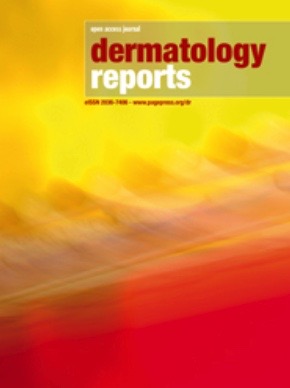Encouraging Diverse Settings of Care and Supporting Community Healthcare Providers
Pharmacists serve as the first and most accessible healthcare providers in communities nationwide. Their role is vital in delivering timely and reliable healthcare services, particularly highlighted during the COVID-19 pandemic. This crisis underscored pharmacists’ essential contribution to healthcare access, especially for underrepresented, underserved populations, and rural communities. These efforts align closely with the United Nations Sustainable Development Goal (SDG) 3: Good Health and Well-being, which aims to ensure healthy lives and promote well-being for all at all ages.
Providing Patient Access to Pharmacy Services
Pharmacists currently provide critical care under a complex framework of federal and state policies established during the pandemic. However, existing federal barriers limit pharmacists’ capacity to meet patients’ needs within their communities, particularly during times when the healthcare system is under significant strain. Addressing these limitations is essential to uphold SDG 3 by ensuring equitable access to quality healthcare services.
- Congressional action is urgently needed to remove current legal restrictions.
- Such reforms will enable pharmacists to continue delivering essential care and services.
- Pharmacists remain among the most trusted healthcare professionals relied upon by entire communities.
Organizations like McKesson and Health Mart actively participate in the Future of Pharmacy Care Coalition, advocating for federal policies that recognize and enhance pharmacists’ critical role in serving America’s senior population. This advocacy supports SDG 10: Reduced Inequalities, by promoting inclusive healthcare access for vulnerable groups.
Limiting Arbitrary Pharmacy Direct and Indirect Remuneration (DIR) Fees
Pharmacy Direct and Indirect Remuneration (DIR) fees have posed significant challenges in recent years, undermining pharmacists’ ability to provide patient care. These fees are often arbitrary, lacking transparency and predictability, which:
- Threatens the financial sustainability of pharmacies.
- Increases costs for the Medicare program.
- Leads to higher out-of-pocket expenses for beneficiaries at the point of sale.
McKesson supports regulatory and legislative reforms aimed at limiting these adverse practices to protect patients, pharmacists, and the federal government. Such measures contribute to SDG 16: Peace, Justice and Strong Institutions, by promoting transparent and accountable healthcare policies.
Furthermore, McKesson advocates for community-based pharmacy practices by advancing research, technology, and patient safety initiatives. Their focus remains on ensuring patients have access to the highest quality care close to home, supporting SDG 9: Industry, Innovation and Infrastructure, and SDG 11: Sustainable Cities and Communities.
For more information, visit Specialty Practice Solutions and explore public policy priorities impacting specialty healthcare providers.
1. Sustainable Development Goals (SDGs) Addressed or Connected
- SDG 3: Good Health and Well-being
- The article focuses on healthcare access, the role of pharmacists, and improving patient care, directly relating to SDG 3 which aims to ensure healthy lives and promote well-being for all at all ages.
- SDG 10: Reduced Inequalities
- The article highlights the importance of pharmacists in serving underrepresented, underserved, and rural populations, which aligns with SDG 10’s goal to reduce inequalities within and among countries.
2. Specific Targets Under Those SDGs Identified
- SDG 3 Targets
- Target 3.8: Achieve universal health coverage, including access to quality essential healthcare services and access to safe, effective, quality, and affordable essential medicines and vaccines for all.
- Target 3.c: Substantially increase health financing and recruitment, development, training, and retention of the health workforce in developing countries, especially in rural areas.
- SDG 10 Targets
- Target 10.2: Empower and promote the social, economic, and political inclusion of all, irrespective of age, sex, disability, race, ethnicity, origin, religion, or economic or other status.
3. Indicators Mentioned or Implied to Measure Progress
- Indicators Related to SDG 3
- Indicator 3.8.1: Coverage of essential health services – the article implies measuring patient access to pharmacy services and essential care provided by pharmacists.
- Indicator 3.c.1: Health worker density and distribution – the article’s emphasis on pharmacists as accessible healthcare providers, especially in underserved and rural areas, relates to this indicator.
- Indicators Related to SDG 10
- Indicator 10.2.1: Proportion of people living below 50% of median income, by age, sex, and persons with disabilities – implied through the focus on underserved populations’ access to healthcare.
- Additional Implied Indicators
- Financial viability and cost indicators related to pharmacy Direct and Indirect Remuneration (DIR) fees, which affect out-of-pocket costs for beneficiaries and sustainability of pharmacies.
- Patient satisfaction and trust in pharmacists as accessible healthcare providers, implied by the article’s emphasis on pharmacists being trusted and essential.
4. Table: SDGs, Targets and Indicators
| SDGs | Targets | Indicators |
|---|---|---|
| SDG 3: Good Health and Well-being |
|
|
| SDG 10: Reduced Inequalities |
|
|
| Additional Indicators Related to Healthcare Access and Costs |
|
|
Source: mckesson.com







